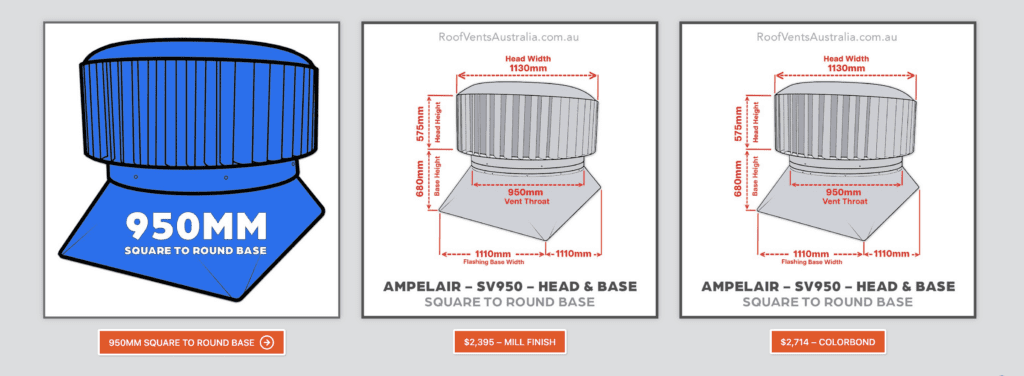Optimizing Indoor Air Quality with Roof-Mounted Ventilation Systems in Australian Homes
Whirlybird Roof Vents Installation packages Greater Sydney Area – Click Here >
Gutter Sumps to the Trade Shipped Free Australia Wide – Click Here >
Rain Heads to the Trade Shipped Free Australia Wide – Click Here >
Dambuster Rain Heads Shipped Free Australia Wide – Click Here >
Eco-Friendly Roofing Insulation Shipped Free – Click Here >
In the quest for healthier and more comfortable indoor environments, Australians are increasingly turning to roof-mounted exhaust fans and residential roof-mounted ventilators. These systems play a vital role in maintaining indoor air quality (IAQ), especially in the face of seasonal adjustments and specific challenges like managing smokers’ exhaust in 2019. This article explores the significance of these ventilation solutions, their impact on customer satisfaction, and the role of operable windows and CO2 sensors in creating healthier indoor spaces.
- Seasonal Adjustments and Indoor Air Quality
Australia’s diverse climate brings about seasonal variations in temperature, humidity, and air quality. This directly affects the indoor environment, making it necessary to adapt ventilation strategies throughout the year. Seasonal adjustments are crucial for maintaining indoor comfort and health.
One notable challenge is managing indoor air quality in homes with smokers, as evidenced in the 2019 case of roof-mounted exhaust fans in Darwin. High-efficiency exhaust systems help mitigate the adverse effects of secondhand smoke by expelling pollutants outdoors, ensuring healthier indoor spaces for non-smoking residents. These systems have proven to be effective in reducing indoor pollution levels, making them essential for homes with smokers.
- The Role of Residential Roof-Mounted Ventilators in Geelong
Geelong, a coastal city in Victoria, experiences its unique climate patterns, which include hot summers and chilly winters. In such regions, residential roof-mounted ventilators have gained popularity for their ability to address the challenges posed by seasonal adjustments.
These ventilators enhance indoor air circulation and control humidity levels, thereby ensuring a more comfortable living environment. Additionally, they work seamlessly with operable windows to provide homeowners with better control over ventilation. This synergy is essential for maintaining optimal IAQ year-round.
- Customer Satisfaction Ratings and Customer Service Experience
The adoption of roof-mounted ventilation systems in Australia has led to increased customer satisfaction, primarily due to their positive impact on IAQ and comfort levels. In a study conducted by the Australian Bureau of Statistics, homeowners who installed roof-mounted exhaust fans in Wollongong reported higher satisfaction with their indoor environment compared to those without such systems.
Moreover, the quality of customer service experienced during installation and maintenance significantly contributes to overall satisfaction. Homeowners value timely responses, efficient installation processes, and reliable post-installation support. Therefore, choosing a reputable provider with excellent customer service is critical for a positive experience.
- Operable Windows: Complementary Ventilation
While roof-mounted ventilation systems are highly effective, they work best when complemented by operable windows. Operable windows allow for natural ventilation, which can be crucial during mild weather or when homeowners prefer fresh outdoor air.
To maximize the benefits of operable windows, homeowners should consider factors like building orientation and local building permits. Building orientation plays a pivotal role in harnessing prevailing winds for natural ventilation, while local building permits ensure compliance with regulations.
- Limited Control and the Need for CO2 Sensors in Coffs Harbour
In Coffs Harbour, where humidity levels can vary significantly, homeowners often face challenges in controlling their indoor environment effectively. The limited control over IAQ can lead to discomfort and even health issues. This is where CO2 sensors come into play.
CO2 sensors help monitor indoor air quality by detecting elevated levels of carbon dioxide, a common indicator of poor ventilation. When CO2 levels rise, the sensor triggers the ventilation system to increase airflow, ensuring fresh air intake. This automated control mechanism is particularly useful in regions like Coffs Harbour, where maintaining optimal IAQ can be challenging.
- Conclusion
In conclusion, roof-mounted exhaust fans and residential roof-mounted ventilators are vital components for achieving and maintaining indoor air quality in Australian homes. They are especially crucial in addressing the challenges posed by seasonal adjustments and specific circumstances such as managing smokers’ exhaust.
Customer satisfaction ratings are consistently high among homeowners who have installed these systems, underscoring their positive impact on comfort and health. A seamless customer service experience further enhances overall satisfaction.
Operable windows, when used in conjunction with roof-mounted ventilation solutions, offer homeowners greater control over their indoor environment. Building orientation and compliance with local building permits are key considerations in optimizing natural ventilation.
For regions with limited control over IAQ, like Coffs Harbour, CO2 sensors provide an intelligent solution to ensure a steady supply of fresh air and a healthier indoor environment.
As Australians continue to prioritize indoor air quality and comfort, the adoption of roof-mounted ventilation systems and complementary strategies will play a pivotal role in creating healthier and more enjoyable indoor living spaces.



